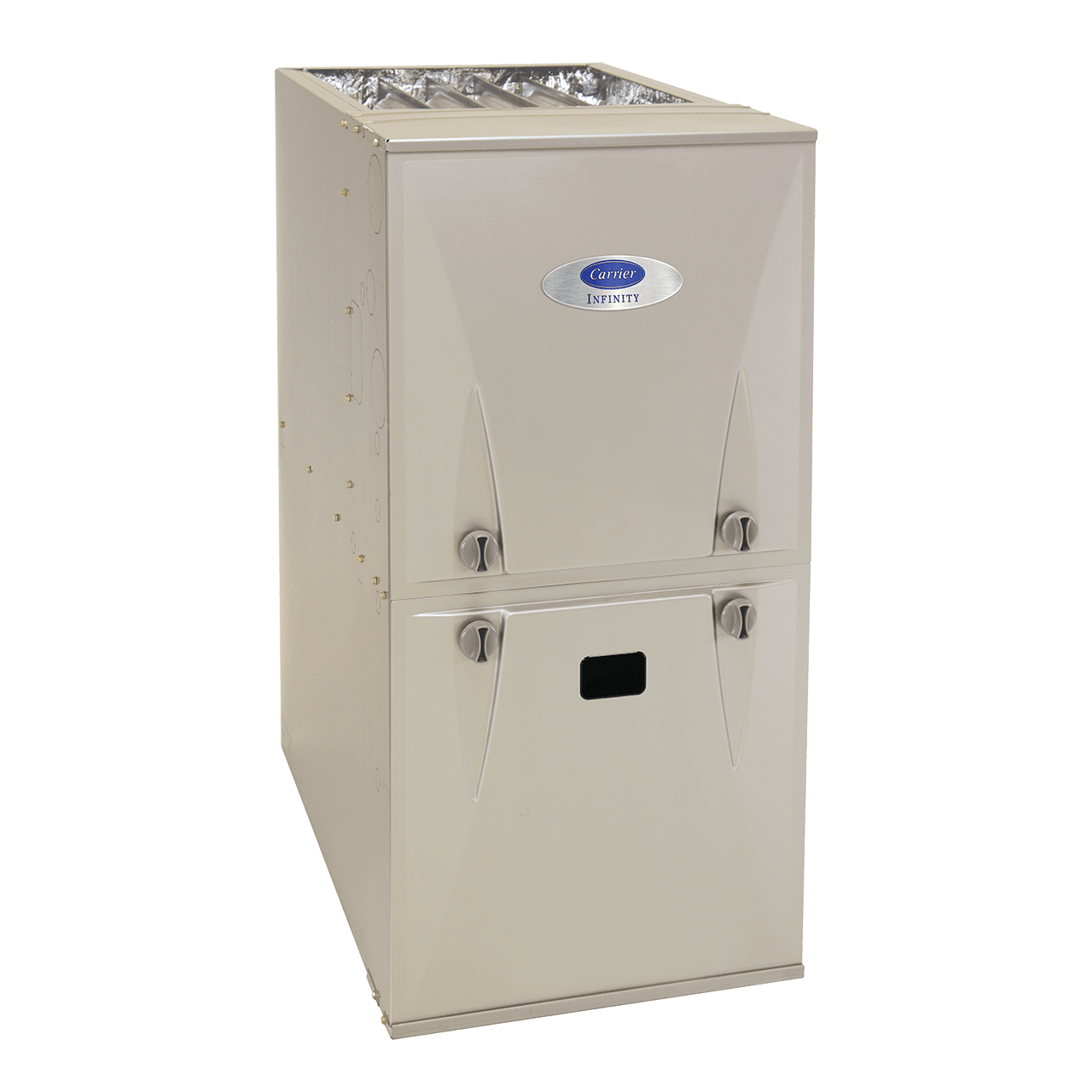What is an Upflow Furnace?
What Is An Upflow Furnace?
An upflow furnace is a type of heating system that operates by drawing in cool air from the bottom and expelling warm air from the top, hence the term 'upflow.' This upward airflow facilitates the efficient distribution of heated air throughout the home.
Kevin Dickson, president of Energy Services Air Conditioning, Heating and Electrical in Naperville, Illinois, explains how an upflow furnace compares to a horizontal furnace or downflow furnace.
“Each furnace orientation operates the same,” Dickson said. “The main differences come with the difficulty of each installation. When a unit is not installed correctly, it can have problems or shorten the lifespan.”
How Does an Upflow Furnace Work?
An upflow furnace operates by blowing heated air upwards from the bottom of the unit - unlike a horizontal furnace or downflow furnace making it efficient and effective for residential heating.
Upflow furnaces function by pulling air through return ducts and filtering the air before it enters the furnace. This filtered air then passes over a hot heat exchanger, which warms the air before it is recirculated back into your living space via supply ducts to various rooms.

Choosing the Right Upflow Furnace
Selecting the right upflow furnace for your home involves considering several factors. From sizing and capacity to energy efficiency and furnace cost, making an informed decision is crucial. Here’s what to consider:
- Sizing and Capacity Requirements: Choosing the right size furnace is essential. An undersized furnace may struggle to heat your space, while an oversized furnace can waste energy. Learn more about calculating furnace size .
- Energy Efficiency and Cost Considerations: Energy efficiency is a vital factor. Look for furnaces with high Annual Fuel Utilization Efficiency (AFUE) ratings, indicating efficient fuel-to-heat conversion. Higher AFUE ratings can help lower heating and cooling energy bills and help reduce your carbon footprint. Also, consider initial costs, installation charges, and potential long-term savings when evaluating options.
Benefits of Upflow Furnaces
- Improved air quality and circulation: These furnaces pull cool air from the bottom and push warm air upward, allowing for better airflow and even heating throughout the home. This process also helps in reducing indoor humidity levels, improving overall air quality.
- Space-saving design and furnace installation options: Upflow gas furnaces are best suited for basements or lower levels, where they can efficiently distribute warm air to higher floors. Their compact design makes them ideal for homes with existing vertical ductwork, allowing for easy integration without extensive modifications.
- Efficiency advantage: By utilizing the natural tendency of warm air to rise, upflow furnaces require less energy to circulate heat, leading to lower heating costs and improved comfort. Their design also enhances heat exchanger performance, maximizing efficiency and furnace longevity.
Installation and Maintenance Tips for Upflow Furnaces
Frequently Asked Questions On Upflow Furnaces
The choice between a downflow vs upflow furnace depends on your home's layout and specific heating need. Upflow furnaces are typically installed in basements or lower levels, whereas downflow furnaces are commonly installed in attics or higher levels. Upflow furnaces tend to work best in homes in colder climates and multi-story homes where warm air can rise to upper floors. Downflow furnaces tend to work better in homes without basements, single-story homes, or those with slab foundations where heating from the top down is more efficient.
Consult with an HVAC professional to determine if an upflow furnace vs downflow is the best option based on your home’s design, climate, and heating requirements.
Yes, an upflow furnace typically has the return air intake at the bottom. In an upflow furnace configuration, cool air is drawn into the furnace from the bottom, the air passes through the heat exchanger where it is heated, and the heated air is then expelled from the top of the furnace and distributed through the ductwork to heat the home.
No, a dedicated upflow furnace cannot be installed horizontally. However, some furnaces are designed to be multi-positional, meaning they can be installed in upflow, downflow, or horizontal configurations. Consult a professional HVAC contractor to ensure proper installation.
Carrier Upflow Furnace Options
At Carrier, we offer a range of upflow furnaces designed to meet your heating needs efficiently. Our gas furnaces are multipoise, meaning that they can be installed as upflow furnaces, downflow or horizontal. Our products incorporate advanced technology and undergo rigorous testing to ensure optimal performance. Talk to your local Carrier dealer to explore upflow furnace replacement options and find the right fit for your home.
Explore Carrier Upflow Furnaces
Choosing a Carrier upflow furnace ensures reliable and efficient heating for your home, with advanced technology that optimizes energy use and enhances comfort. Known for their durability, quiet operation, and competitive AFUE ratings, Carrier upflow furnaces provide consistent warmth throughout the winter while helping to reduce heating costs. When you're buying a new furnace, explore Carrier's line of upflow furnaces. Schedule an appointment with your local Carrier dealer for furnace installation today.
ENERGY STAR® certified. Our highest efficiency and most advanced furnace with up to 98.5% AFUE for premium energy savings with excellent humidity control and premium comfort
ENERGY STAR® certified. Up to 97.0% AFUE for premium energy savings with enhanced comfort features.
All sizes ENERGY STAR® certified. Up to 97% AFUE for premium energy savings with standard comfort features.
Learn More About Furnaces
- How Much Does it Cost to Replace vs Repair a Furnace?
- Read about furnace repair & service
- How do gas Furnaces work?
- Discover the signs you need a new furnace
- 10 things to consider when buying a furnace
- Comparing types of furnaces




